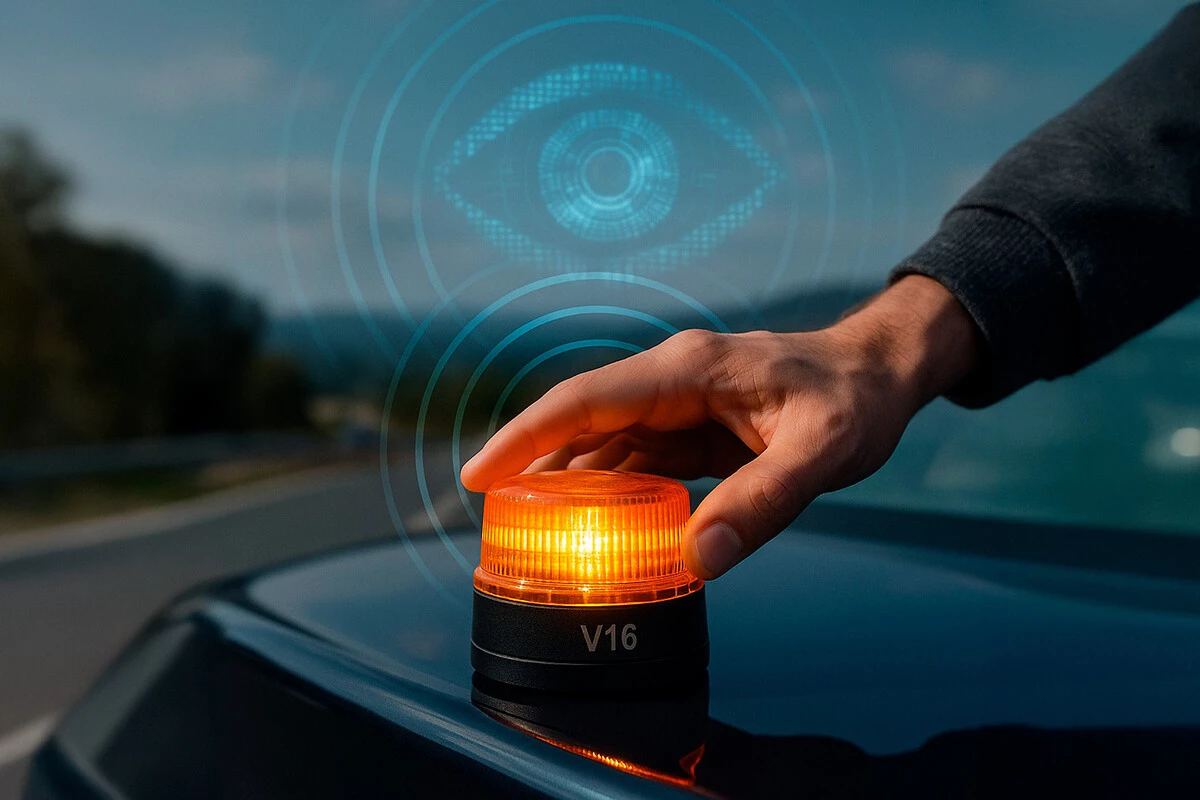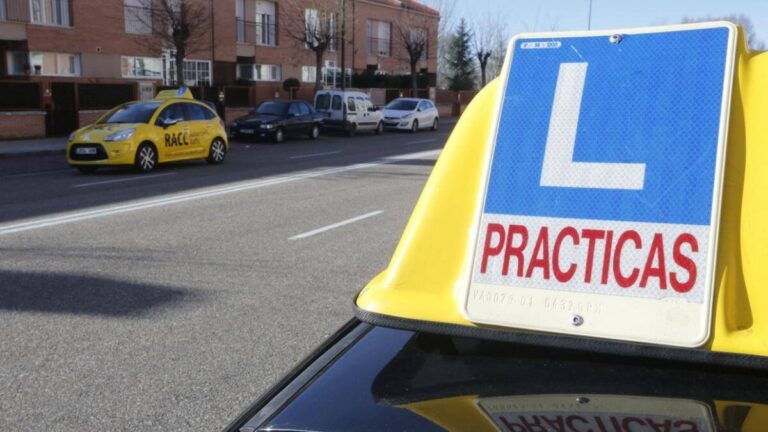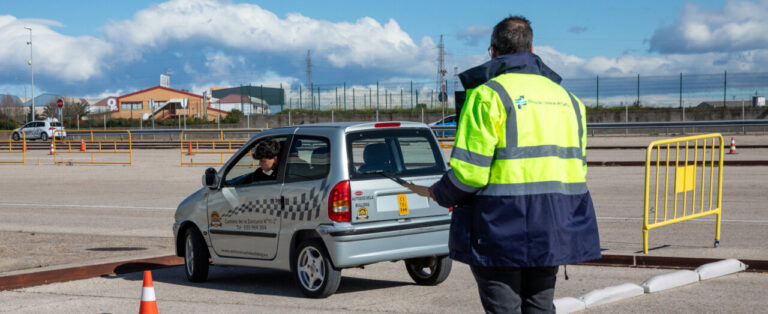The connected V16 beacons will be mandatory in all vehicles in Spain as of January 1, 2026, and the Directorate General of Traffic (DGT) wanted to resolve the most frequent doubts about their use. These small luminous devices, which can already be purchased, aim to reduce road traffic accidents by preventing drivers from having to get out of the car to signal a breakdown or accident.
However, although its operation is simple, its correct use is key to ensure safety and comply with regulations. The DGT has published a series of guidelines to explain how to act correctly in case of emergency and what mistakes drivers should avoid.
Activating the V16 beacon: the first step in the event of a fault
Before any incident on the road, the first thing to do is to signal our position. To do so, the DGT recommends activating the V16 beacon as soon as the vehicle stops.
The device has a magnetic base that allows it to be easily attached to the car roof. It should be placed as high as possible, preferably in the center of the roof, so that the light is visible from any angle. Most models light up with a single touch on the top, and emit a flashing amber light visible from a kilometer away, even in poor visibility conditions.

The great novelty of the connected beacons is their ability to automatically send the vehicle’s location to the DGT control center by means of a geolocation signal. This allows other drivers, especially those with connected navigation systems, to receive a real-time hazard warning about the incident.
Reflective vests are still mandatory
One of the most common questions among drivers is whether, with the advent of V16 beacons, it will no longer be necessary to wear a reflective vest. The answer is no.
According to the General Traffic Regulations, the occupants of the vehicle must leave the vehicle whenever there is a safe place off the roadway. In addition, they must do so on the opposite side of the road to the traffic and without remaining on the shoulder or in the traffic lanes.
The DGT reminds that, in these cases, it is mandatory to wear a reflective vest before getting out of the car, since the beacon replaces the emergency triangles, but does not exempt the use of vests.
Only in those cases in which traffic conditions or the environment make it dangerous to leave the vehicle, the occupants must remain inside, with their seatbelts fastened and the V16 beacon activated on the roof. “If traffic conditions do not allow the occupants to leave the vehicle safely, they shall remain in the passenger compartment with the seat belt fastened,” the regulations state.
The V16 beacon does not alert emergency services.
Another common misconception that the DGT wanted to clarify is the role of the connection to the Traffic network. Although connected V16 beacons transmit the exact position of the broken-down vehicle, this does not mean that the emergency services are automatically alerted.
The beacon has a purely informative function: it serves to mark the location of the car and alert other drivers, but it does not transmit personal or contact data. Therefore, if we suffer a breakdown or accident, we must be the ones to notify the assistance service or emergency teams.
🚨 Do you know what to do in case of breakdown or accident with the #V16Connected? We will only leave the 🚗, conditions permitting, to go to a safe place. ℹ️ 👉 https://t.co/vhJvaZ1M6A pic.twitter.com/EBay27Oo68
– Dir. Gral. Tráfico (@DGTes) October 4, 2025
The DGT reminds that vehicles homologated in Europe as of March 31, 2018 have the eCall system, a device that makes automatic emergency calls in the event of a serious accident. If our car does not have it, the call must be made from the cell phone or by any other available means.
DGT recommendations for the use of the V16 beacon
The DGT has published a practical guide for the correct use of the new beacons, highlighting the following steps:
-
Stop the vehicle in a safe place, off the roadway whenever possible.
-
Activate the V16 beacon before leaving the car by placing it on the roof using its magnetic base.
-
Check that the flashing light is working properly and that the device is visible from all angles.
-
Wear a reflective vest if you are getting out of the vehicle.
-
Leave the car on the opposite side of the road and stay in a safe place.
-
Contact the helpdesk or emergency services if necessary.
-
Do not stay on the roadway or go near the flow of traffic.
Why do V16 beacons replace triangles?
The main reason for this change is road safety. According to the DGT, more than 20 people have been killed on the road in recent years while using the emergency triangles. With the V16 beacons, the driver can signal his vehicle without leaving the passenger compartment, drastically reducing the risk.
In addition, the connected beacons make it possible to inform other drivers in real time about the existence of a stopped vehicle, which improves accident prevention.
This new system is part of the mobility digitalization strategy promoted by the DGT, which seeks to create a connected and intelligent traffic network throughout Spain.
Which V16 beacons are approved
Not all beacons available on the market are valid. The DGT insists that drivers must ensure that the device is homologated and certified with approved connectivity.
The beacons must include the DGT identification label and be connected to the DGT 3.0 platform, the network that manages real-time traffic information.
In addition, its battery must guarantee at least 18 months of operation, and its light must be visible from a distance of one kilometer at a 360-degree angle.










